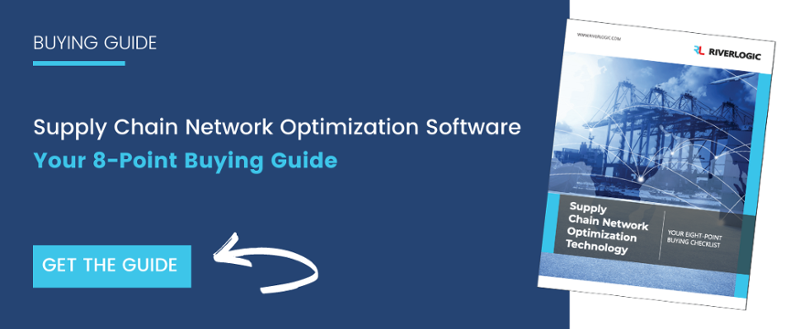Not since the Second World War has there been such global disruption as experienced in 2020. International transportation came to a standstill, major populations were confined to their homes, and factories shut down.
As the initial wave of COVID-19 receded and economies started to open, preconceived ideas about supply chain optimization were found wanting.
Supply chain factors previously considered unimportant are now receiving renewed attention. Issues such as supply chain resilience and multiple sourcing are taking precedence over single-supplier, lowest-cost sourcing.
In this article, we'll outline how COVID-19 has had a major impact on how people define true supply chain optimization today, versus how they have defined it in the past.
Classic Supply Chain Optimization Concepts
The growth of international free trade, together with the commoditization of items previously considered as luxuries, rewrote the supply chain optimization book.
Companies focused on factors such as:
- Lowest-cost production in developing countries
- Lean management
- Outsourcing
- Single sourcing
- Just-in-time manufacture
In fact, they focused on anything that could be done to reduce landed costs, ensure reliable supply and create a competitive advantage.
Vulnerabilities Exposed by COVID
There's no doubt that, for much of the time, these classic supply chain optimization concepts worked.
But when they didn't, there was chaos.
COVID-19 starkly upended the myth that lowest cost, just-in-time manufacturing is supreme. Here's why.
False assumptions about global stability
Global stability is crucial for world-wide supply chains. Without it, they simply can't function effectively. Although there were indications of what could happen, these were largely ignored.
Over-reliance on low-cost suppliers in China and the developing world
Although a lot was said about the benefits of onshoring, this was largely ignored by manufacturers used to trading with China. In the last eight years, the U.S. share of world manufacturing fell from 28% to only 18%. Consequently, manufacturers were forced to shut down, not because of COVID-19 in the U.S., but due to component shortages.
Reliable shipping and transportation
International trade is dependent on reliable and predictable shipping. As COVID-19 took hold, global shipping, especially from China, came to a standstill.
Critical Need to Develop New Supply Chain Optimization Strategies
In the face of these challenges, manufacturers must review their supply chain optimization strategies. What this means for each may be different, but here are some ideas:
- Build supply chain resilience by increasing the ability of the supply chain to withstand shocks
- Re-evaluate single sourcing strategies
- Relocate production
- Develop multiple sourcing strategies
- Prepare for a third wave of COVID-19 (The U.S. and many other countries are well under way with a second wave.)
Don't Underestimate Complexity of Implementing Radically Different Supply Chain Strategies
The events of the past year mean, for many, a complete overhaul of their supply chain optimization strategies. The difficulty is identifying the right, appropriate strategies for the future. It's not simply a matter of arbitrarily choosing a different strategy. The process needs a careful study along with an evaluation of alternative supply chain planning scenarios.
Need for Appropriate Tools to Handle Change
Many will go down the conventional supply chain optimization route of manually reviewing:
- Supply chain network design
- Supply chain planning
- Implementation
But there's a better way.
This is to use advanced analytics, specifically prescriptive analytics, to guide the process. Model your existing supply chain network, including all its limitations, features and constraints. Then review different scenarios, such as another COVID-19 shutdown, a trade war, or natural disaster.
Then implement data-driven decision support systems to develop resilient supply chain strategies and ensure your survival in a difficult, complex and frankly crazy environment.







